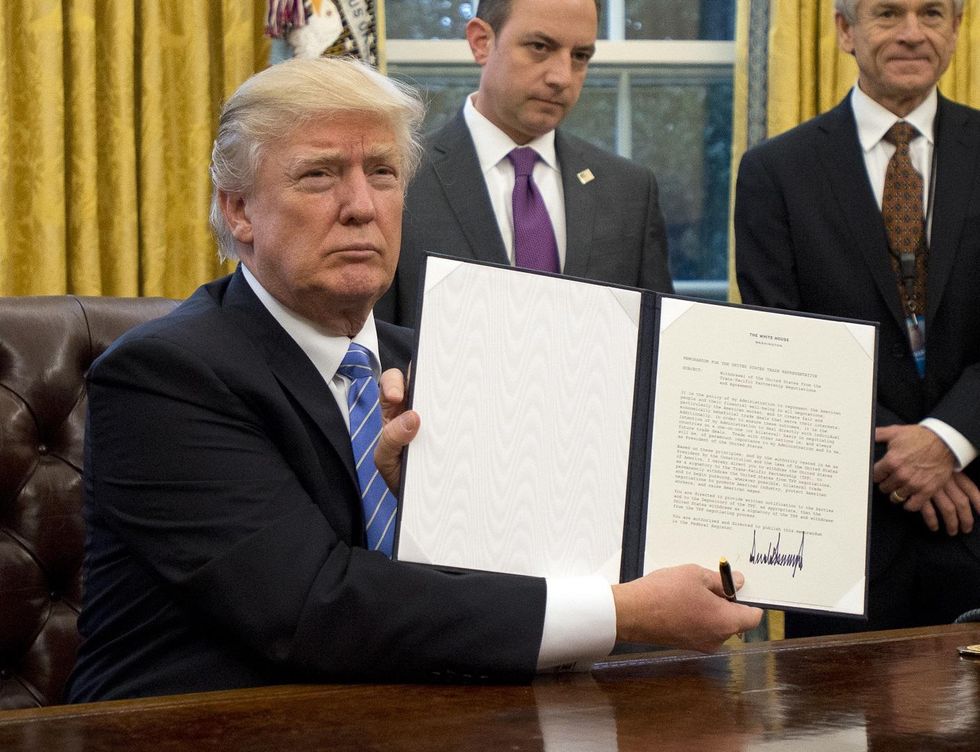President Donald Trump is considering rejoining the Trans-Pacific Partnership. Trump fulfilled a campaign promise when he took the United States out of the trade deal on Jan. 23, 2017.
“Take a look at getting us back into that agreement, on our terms of course,” Trump told U.S. Trade Representative Robert Lighthizer and chief economic adviser Larry Kudlow on Thursday, according to the Washington Post. Trump made this statement at a meeting of GOP senators, members of Congress, and governors to discuss trade policy.
Trump previously slammed the trade deal in June 2016 as a “disaster done and pushed by special interests who want to rape our country.”
He added, “Just a continuing rape of our country. That’s what it is, too. It’s a harsh word — it’s a rape of our country. This is done by wealthy people that want to take advantage of us and that want to sign another partnership.”
Here's what you need to know about the Trans-Pacific Partnership
The TPP, which was put into place by former President Barack Obama in 2016, was criticized by both Republicans and Democrats during the 2016 presidential campaign. Hillary Clinton made opposing the deal part of her platform, although she was criticized by Sen. Bernie Sanders (D-Vt.) for calling it the “gold standard” while she was secretary of state and the deal was still being negotiated.
In addition to the United States, the TPP was signed by the governments of Japan, Malaysia, Vietnam, Signapore, Brunei, Australia, New Zealand, Canada, Mexico, Chile and Peru. After the U.S. pulled out of the deal before it was supposed to take effect, the other nations formed their own version of the TPP.
Here’s how this deal could be different
While Trump may want to rejoin the deal, he has indicated that he wants to do so on his own terms, making the deal more favorable for the United States.
Sen. John Thune (R-S.D.) agreed with the president’s decision, and said he saw a new TPP deal as a bargaining chip to use in trade negotiations with China.
“If you really want to get China’s attention," Thune said, "one way to do it is start doing business with all the people they’re doing business with in the region: their competitors.”
“We should be leading TPP,” Sen. Ben Sasse (R-Neb.) told the Post. “China is a bunch of cheaters and the best way to push back on their cheating would be to be leading all these other rule of law nations in the Pacific that would rather be aligned with the U.S. than with China.”




